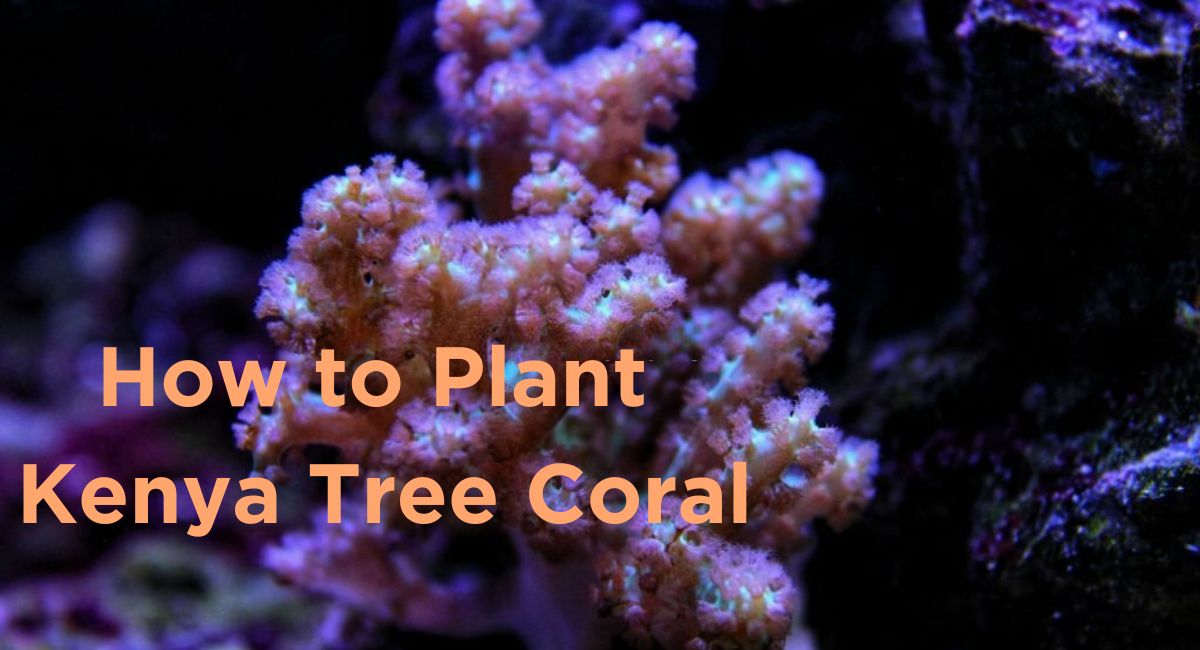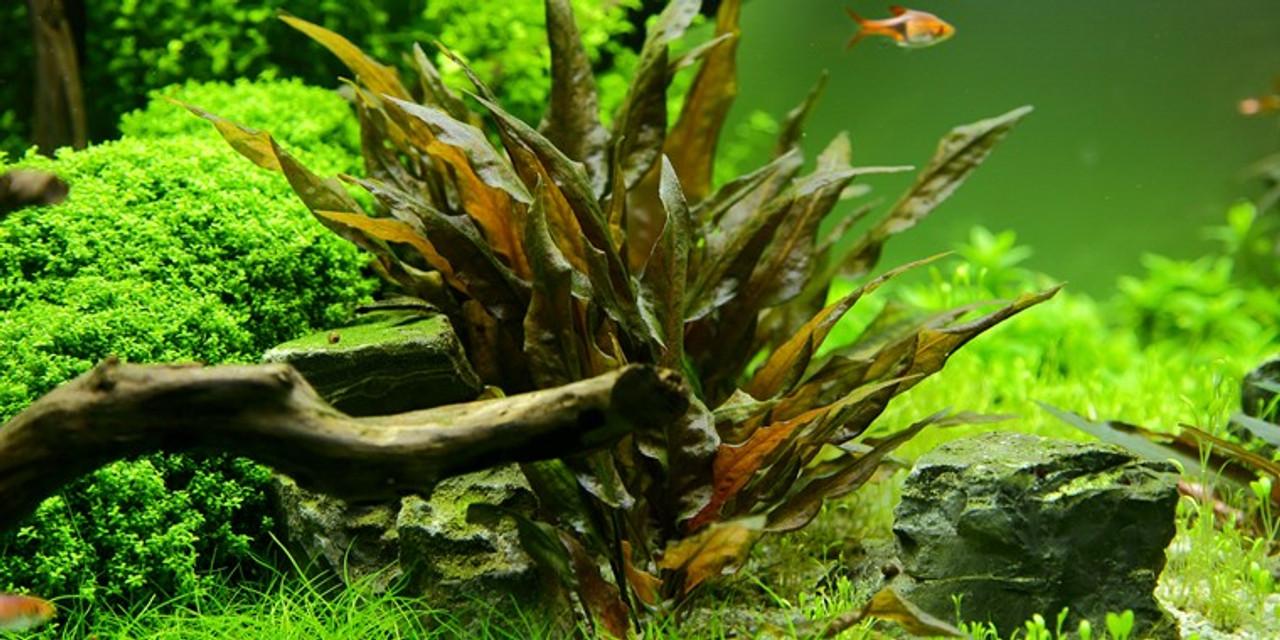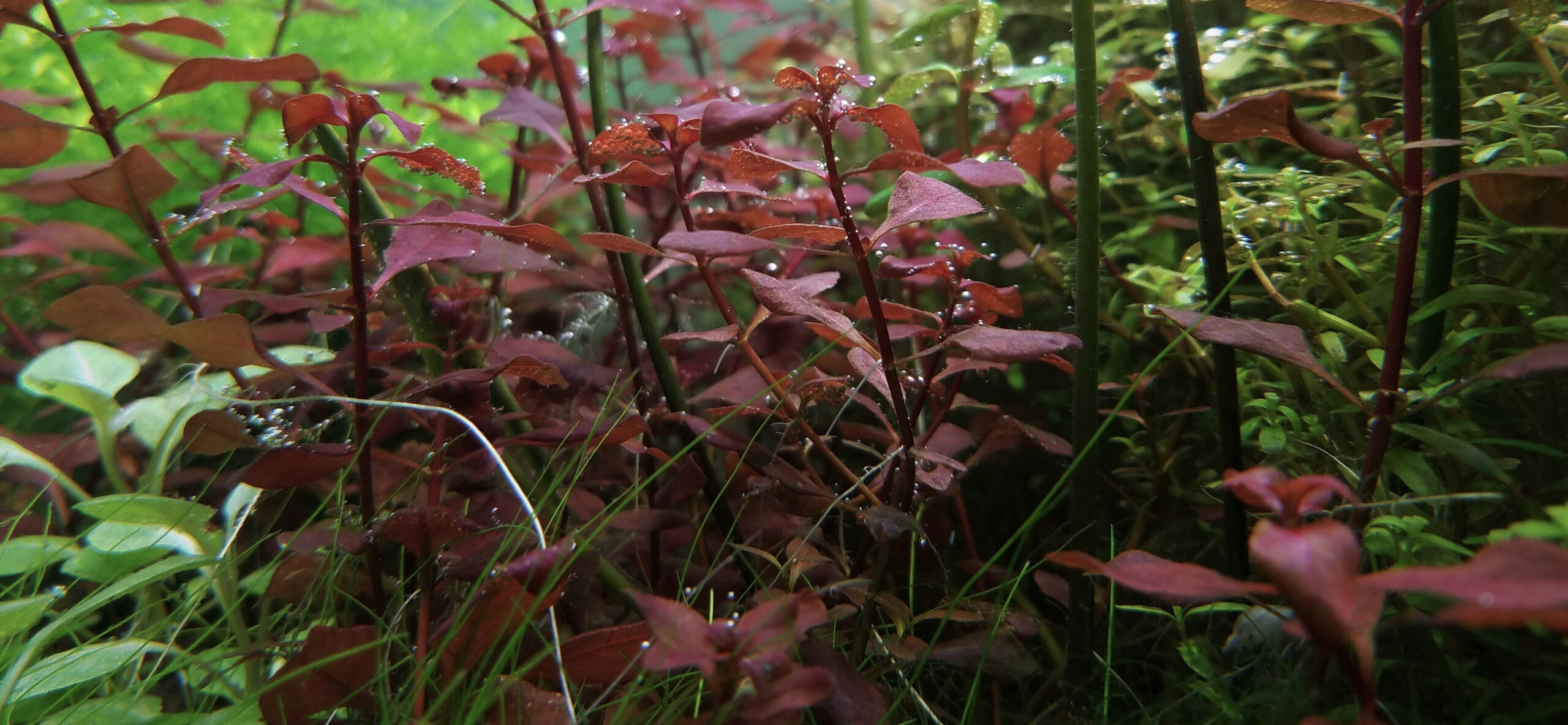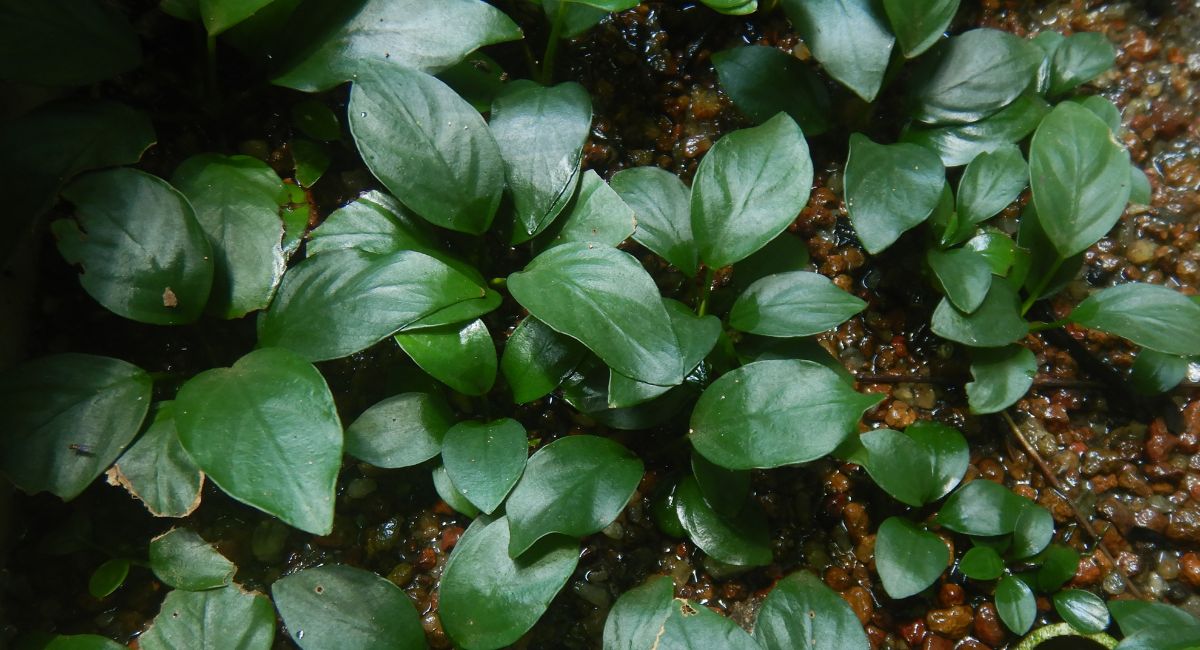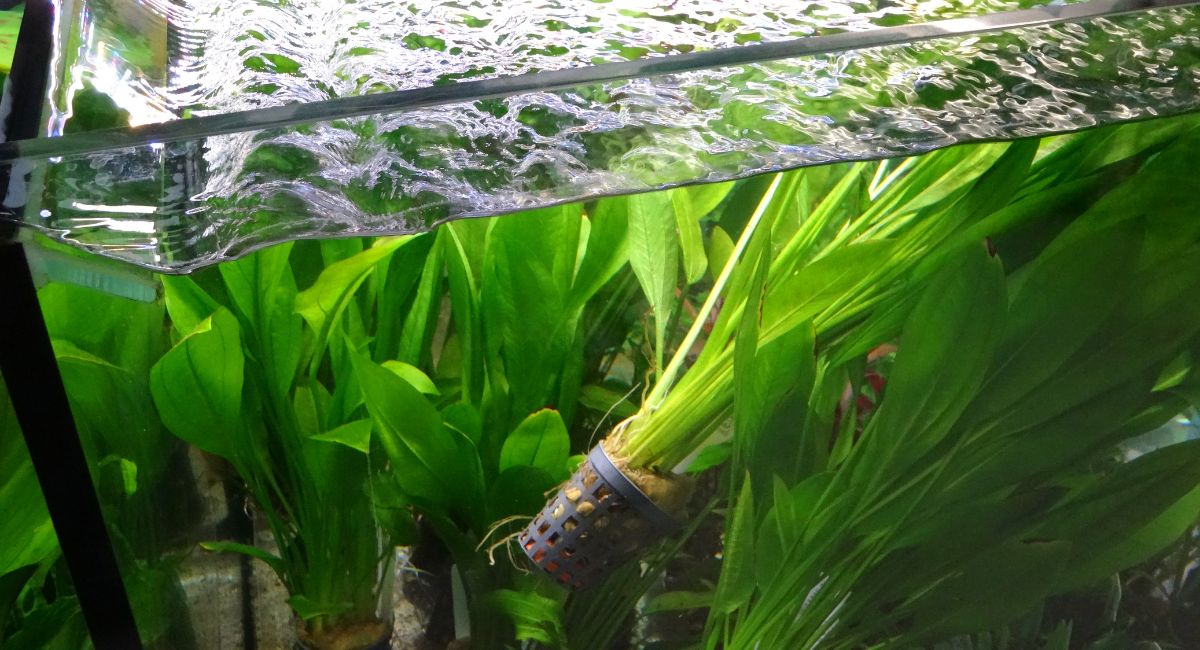Smartplantedaquarium.com participates in affiliate marketing programs. We may earn commissions on purchases made through our affiliate links. This doesn't affect our content or recommendations and we only recommend products we would put in our own tanks.
Coral reefs are fascinating and vital ecosystems that support an incredible diversity of marine life. Among the many coral species, the Kenya Tree Coral (Nemenzophyllia turbida) stands out as a unique and captivating addition to any reef. In this article, we will explore the essential aspects of planting and caring for Kenya Tree Coral while emphasizing the significance of coral reef conservation and the measures taken to ensure sustainable coral planting.
Beyond their role in supporting marine life, coral reefs act as natural buffers, protecting coastlines from erosion and mitigating the impact of tropical storms. Furthermore, these vibrant ecosystems have significant economic value, attracting tourists and providing livelihoods for local communities through activities such as snorkeling and scuba diving.
Among the various coral species involved in restoration efforts, the Kenya Tree Coral holds significant appeal for its unique growth patterns and striking appearance. To successfully care for Kenya Tree Coral, one must understand the step-by-step planting process, as well as the specific conditions and Coral planting guide tailored to this species.
Contents
Overview of Kenya Tree Coral
Kenya Tree Coral (Capnella gaboensis) is a captivating and popular soft coral species in the aquarium hobby. Its elegant and tree-like appearance, with swaying fronds adorned in vibrant colors, makes it a visually striking addition to any reef tank. Due to its hardy nature and adaptability, Kenya Tree Coral is often recommended for beginners, providing a forgiving experience for those new to coral care.
This coral species boasts a rapid growth rate, allowing enthusiasts to witness visible progress and development in their aquariums relatively quickly. It is well-suited for tanks with moderate to low lighting, making it accessible to hobbyists who may not have high-intensity lighting setups.
Kenya Tree Coral’s minimal feeding requirements add to its beginner-friendly appeal. While primarily photosynthetic, occasional supplemental feeding with phytoplankton or coral-specific foods can enhance its growth and coloration.
Description and Appearance:
The Kenya Tree Coral, scientifically known as Nemenzophyllia turbida, is a captivating species of soft coral that belongs to the family Xeniidae. This soft coral is renowned for its striking appearance, making it a popular choice among marine enthusiasts and reef keepers alike. Unlike hard corals, Kenya Tree Coral lacks a rigid exoskeleton and is instead characterized by flexible, tree-like structures with fronds that sway gracefully with the water’s movement.
The fronds of the Kenya Tree Coral are covered in polyps, each adorned with eight tentacles. These polyps are responsible for the coral’s vibrant colors, which can range from shades of brown, green, blue, and even purple. Under proper lighting conditions, these colors become even more pronounced, enhancing the coral’s beauty and making it a captivating addition to any coral reef aquarium.
Origin:
The Kenya Tree Coral derives its name from its supposed place of origin, Kenya, East Africa. However, it’s essential to note that this coral species can also be found throughout various regions in the Indo-Pacific, including parts of the Red Sea, the Indian Ocean, and the Pacific Ocean. Its wide distribution and popularity in the aquarium trade have contributed to its availability in many parts of the world.
Different Types of Kenya Tree Coral:
While Nemenzophyllia turbida is commonly referred to as Kenya Tree Coral, it’s worth mentioning that there are some variations and closely related species that share similar traits. These include:
- Capnella sp. (Kenya Tree Coral): This is the true Kenya Tree Coral that displays the characteristic tree-like growth with swaying fronds. It is often found in various colors, ranging from brown to green and purple.
- Capnella gaboensis (Kenya Tree Coral): This species is quite similar in appearance to Nemenzophyllia turbida, often making it challenging to differentiate between the two without close examination. It is also known for its branching, tree-like structure.
- Capnella imbricata (Kenya Tree Coral): Another closely related species, Capnella imbricata, shares similarities with the Kenya Tree Coral. Its appearance and care requirements are also comparable.
Benefits of Keeping Kenya Tree Coral in Aquariums:
Keeping Kenya Tree Coral (Capnella gaboensis) in aquariums offers several benefits, making it a popular choice among marine hobbyists and reef keepers. Here are some of the advantages of having Kenya Tree Coral in your aquarium:
| Benefits of Keeping Kenya Tree Coral in Aquariums |
|---|
| 1. Ease of Care |
| 2. Visual Appeal |
| 3. Compatibility with Other Species |
| 4. Water Filtration |
| 5. Coral Propagation |
| 6. Low Light Requirements |
| 7. Education and Conservation |
| 8. Contribution to Biodiversity |
- Ease of Care: Kenya Tree Coral is relatively easy to care for compared to some other coral species. It adapts well to aquarium conditions, making it suitable for both beginner and experienced aquarists.
- Visual Appeal: With its captivating tree-like appearance and swaying fronds, the Kenya Tree Coral adds a touch of natural beauty and elegance to any aquarium. Its vibrant colors can create a stunning display, enhancing the overall aesthetics of the tank.
- Compatibility with Other Species: Kenya Tree Coral is generally non-aggressive and coexists peacefully with various fish and invertebrate species. It provides a natural shelter and hiding spots for smaller marine organisms, contributing to a harmonious and balanced ecosystem within the aquarium.
- Water Filtration: Like other soft corals, Kenya Tree Coral possesses efficient filter-feeding abilities. Its polyps extend to capture plankton and small organic particles from the water column, helping to maintain water clarity and quality.
- Coral Propagation: Kenya Tree Coral is known for its ability to propagate easily. With proper care, it can grow and expand rapidly, providing an opportunity for aquarists to share or trade fragments with other enthusiasts, contributing to coral conservation efforts.
- Low Light Requirements: While providing moderate to high lighting enhances the coral’s coloration, Kenya Tree Coral can also thrive under lower light conditions, making it adaptable to a wide range of lighting setups in aquariums.
- Education and Conservation: By keeping Kenya Tree Coral in aquariums, hobbyists can raise awareness about coral reef ecosystems and marine conservation. Observing the coral’s growth and behavior can foster a deeper appreciation for these delicate marine organisms and the importance of protecting their natural habitats.
- Contribution to Biodiversity: Incorporating Kenya Tree Coral in aquarium setups contributes to the diversity of marine life on display. It showcases the beauty and uniqueness of coral reef ecosystems, allowing viewers to experience a slice of the underwater world firsthand.
Required Equipment and Supplies
Certainly! Here’s an elaboration of the required equipment and supplies for setting up an aquarium to keep Kenya Tree Coral:
Here’s a concise table listing the required equipment and supplies for setting up an aquarium to keep Kenya Tree Coral:
| Required Equipment and Supplies |
|---|
| 1. Aquarium Tank |
| 2. Filtration System |
| 3. Heater |
| 4. Lighting System |
| 5. Substrate |
| 6. Water Testing Kit |
| 7. Aquarium Salt |
| 8. Water Circulation Pump |
| 9. Coral Frag Plugs |
| 10. Aquascaping Tools (tweezers, scissors) |
| 11. Thermometer |
| 12. Power Strip |
| 13. Protein Skimmer (optional but beneficial) |
| 14. Timer for Lighting |
| 15. RODI Water System (for water quality) |
| 16. Coral Food or Phytoplankton (optional) |
- Aquarium Tank: The first and foremost requirement is a suitable aquarium tank to house the Kenya Tree Coral. Consider the size of the tank based on the number of corals you plan to keep and the available space in your home.
- Filtration System: A filtration system is essential for maintaining water quality by removing impurities, toxins, and waste. A reliable filtration system helps keep the water clear and stable, which is crucial for the health of the coral and other tank inhabitants.
- Heater: Kenya Tree Coral requires stable water temperatures within the range suitable for marine environments. A heater helps regulate the water temperature, keeping it consistent and appropriate for the coral’s well-being.
- Lighting System: Lighting is crucial for the growth and coloration of Kenya Tree Coral. Choose a lighting system specifically designed for coral reefs, providing the appropriate spectrum and intensity to support photosynthesis.
- Substrate: A suitable substrate is essential to provide a stable base for the Kenya Tree Coral to attach and grow. Fine-grained sand or live rock rubble can be used as substrate options.
- Water Testing Kit: Regular water testing is crucial to monitor water parameters such as temperature, pH, ammonia, nitrite, nitrate, and salinity. A water testing kit enables you to maintain optimal water conditions for the coral’s health.
- Aquarium Salt: Marine aquariums require the addition of aquarium salt to maintain proper salinity levels similar to natural seawater. Ensure to use a reputable marine aquarium salt mix.
- Water Circulation Pump: Good water circulation is necessary to simulate natural ocean currents and prevent dead spots in the tank. A circulation pump ensures that nutrients and oxygen reach all areas of the tank.
- Coral Frag Plugs: When propagating Kenya Tree Coral or other corals, coral frag plugs are used as a base to attach the coral fragments for growth and transplantation.
- Aquascaping Tools: Aquascaping tools like tweezers and scissors are useful for arranging and maintaining the layout of corals and other elements in the aquarium.
- Thermometer: A thermometer helps monitor water temperature accurately, ensuring it stays within the appropriate range for the coral’s health.
- Power Strip: Considering the number of electrical devices needed for the aquarium, a power strip with surge protection is useful for organizing and powering the equipment.
- Protein Skimmer: While not mandatory, a protein skimmer can help remove organic waste and excess nutrients from the water, promoting a cleaner and healthier environment.
- Timer for Lighting: A timer for the lighting system allows you to set a consistent photoperiod, mimicking natural day-night cycles, which is beneficial for coral health.
- RODI Water System: For optimal water quality, a Reverse Osmosis Deionization (RODI) water system is used to produce purified water free from impurities.
- Coral Food or Phytoplankton (optional): While Kenya Tree Coral derives much of its nutrition from filter-feeding, supplementary coral food or phytoplankton can be beneficial to support growth and coloration.
How to Plant Kenya Tree Coral
Planting Kenya Tree Coral (Capnella gaboensis) in your aquarium requires careful attention to detail and proper techniques to ensure its successful growth and health. Follow these steps to plant Kenya Tree Coral effectively:
Step 1: Tank Preparation
- Tank Selection: Choose an appropriately-sized aquarium that provides enough space for the Kenya Tree Coral to grow and sway its fronds comfortably.
- Substrate Placement: Add a fine-grained sand or live rock rubble substrate at the bottom of the tank. This substrate will serve as a stable base for the coral to attach and anchor itself.
- Water Quality: Ensure that the water quality meets the specific requirements of marine corals. Use a reliable water testing kit to monitor parameters like temperature, salinity, pH, ammonia, nitrite, and nitrate levels. Adjust as needed to maintain optimal conditions.
Step 2: Acquiring Kenya Tree Coral Fragments
- Source from Reputable Suppliers: Obtain Kenya Tree Coral fragments from reputable suppliers or local coral enthusiasts. This ensures that you receive healthy and ethically sourced corals.
- Check for Health: Examine the coral fragments closely to ensure they are in good health. Look for vibrant coloration, fully extended polyps, and no signs of damage or disease.
- Quarantine: Before adding the coral fragments to your main aquarium, consider quarantining them in a separate tank for a brief period. This precautionary measure helps prevent the potential introduction of pests or diseases to your main display.
Step 3: Placement and Attachment of Kenya Tree Coral
- Choose a Suitable Location: Select an area in your aquarium with moderate water flow and appropriate lighting. Kenya Tree Coral thrives in areas with gentle to moderate water movement and sufficient access to light.
- Attach Fragments to Substrate: Using coral frag plugs or similar attachments, gently secure the Kenya Tree Coral fragments to the substrate. Ensure they are placed at a sufficient distance from each other to prevent crowding as they grow.
- Monitor and Adjust: After attaching the coral fragments, closely observe their response to the new environment. Check for any signs of stress or detachment. If needed, adjust the flow and lighting to provide the optimal conditions for the coral’s well-being.
Step 4: Ongoing Care and Maintenance
- Water Quality Maintenance: Regularly perform water changes and use a protein skimmer if available to maintain water clarity and quality. Monitor water parameters consistently and take necessary actions to keep them within the appropriate range.
- Feeding Kenya Tree Coral: Kenya Tree Coral is a filter-feeder and captures tiny particles from the water using its polyps. However, if you want to supplement their diet, provide phytoplankton or coral-specific foods occasionally.
- Pruning and Propagation: As the Kenya Tree Coral grows, you may need to trim or prune it to maintain its desired shape and prevent overcrowding. You can use the trimmed fragments to propagate new corals or share with other reef enthusiasts.
Step 5: Water Flow Management
- Create Gentle Turbulence: Kenya Tree Coral prefers gentle water movement, as strong currents can cause stress and damage the delicate fronds. Use powerheads or water pumps with adjustable flow to create gentle turbulence within the tank.
- Prevent Dead Spots: Ensure that the water flow reaches all areas of the tank, avoiding stagnant or dead spots where debris can accumulate. This promotes nutrient distribution and prevents the buildup of detritus.
- Observe Coral Response: Regularly observe how the coral responds to the water flow. If you notice any signs of excessive swaying or detachment, adjust the flow to provide an optimal balance between movement and stability.
Mistakes to Avoid When Planting Kenya Tree Coral
When planting Kenya Tree Coral, it’s important to be aware of potential mistakes that can hinder the success of the transplantation. Here are some common mistakes to avoid:
- Neglecting to select healthy coral fragments: Choosing unhealthy or damaged coral fragments can significantly reduce their chances of survival. Always select vibrant, intact fragments free from signs of disease or damage.
- Failing to prepare the transplantation site adequately: The transplantation site should closely mimic the natural habitat of Kenya Tree Coral. Ensure proper lighting conditions, water flow, and water quality to promote their well-being and growth.
- Inadequate attachment of coral fragments: Properly securing the fragments is crucial to their establishment. Use coral glue or epoxy to securely attach the fragments to a stable substrate, such as live rock or artificial coral plugs.
- Improper placement of fragments: Carefully position the fragments in the transplantation site to allow for optimal growth and water flow. Avoid overcrowding or placing them in areas that may impede their development.
- Lack of monitoring and maintenance: Regularly monitor the transplanted Kenya Tree Coral for signs of growth, health, and any potential issues. Maintain stable water parameters and conduct regular water testing to ensure optimal conditions.
- Neglecting proper care: Kenya Tree Coral requires proper care to thrive. This includes maintaining appropriate lighting levels, providing adequate water flow, and supplementing essential nutrients as needed. Regularly clean debris or algae that may accumulate on the coral branches.
How to Use Kenya Tree Coral for Aquascaping
Here are few points on how Kenya Tree Coral can be used for Aquascaping:
| Tips for Using Kenya Tree Coral in Aquascaping |
|---|
| 1. Focal Point |
| 2. Contrast and Color |
| 3. Natural Placement |
| 4. Layering and Depth |
| 5. Grouping and Clustering |
| 6. Negative Space |
| 7. Lighting Considerations |
| 8. Maintenance and Pruning |
- Focal Point: Use Kenya Tree Coral as a focal point in your aquascape. Its unique branching structure and vibrant colors can draw attention and become a centerpiece of your aquarium design.
- Contrast and Color: Consider the color scheme of your aquascape and choose a Kenya Tree Coral specimen that complements or provides contrast to the other elements in your tank. This can create visual interest and make the coral stand out.
- Natural Placement: Mimic the natural environment by placing Kenya Tree Coral in areas with moderate water flow. This will allow the coral’s branches to sway gently, adding movement and a sense of realism to your aquascape.
- Layering and Depth: Use Kenya Tree Coral to create depth and dimension in your aquascape. Position it in the foreground, midground, or background, depending on its size and the overall layout of your tank.
- Grouping and Clustering: Cluster multiple Kenya Tree Coral specimens together to create a visually appealing grouping. This can simulate a coral colony and make the aquascape look more natural.
- Negative Space: Leave some negative space around Kenya Tree Coral to give it room to grow and expand its branches. This will prevent overcrowding and allow the coral to develop its characteristic tree-like structure.
- Lighting Considerations: Kenya Tree Coral requires moderate to high lighting levels to thrive. Ensure that your aquarium lighting provides the appropriate intensity and spectrum for the coral’s needs. Proper lighting will enhance the coral’s colors and promote its growth.
- Maintenance and Pruning: Regularly monitor the growth of Kenya Tree Coral and trim any overgrown branches if necessary. This will help maintain its desired shape and prevent it from overshadowing other corals or aquatic plants in your aquascape.
Conclusion
Kenya Tree Coral (Capnella gaboensis) in your aquarium can be a rewarding and enriching experience. This resilient and adaptable coral species is well-suited for beginners in the hobby, offering a host of advantages that make it an ideal choice for marine enthusiasts.
By following the step-by-step guide, beginners can create a suitable environment for Kenya Tree Coral to thrive and witness its rapid growth and vibrant colors. Its forgiving nature and low-maintenance requirements provide reassurance to those new to coral care, allowing them to focus on other aspects of aquarium upkeep.
Moreover, the educational value of keeping Kenya Tree Coral goes beyond its beauty, offering opportunities to learn about coral biology, propagation, and the intricacies of creating a harmonious aquarium ecosystem.
In fostering a thriving and diverse marine environment, the Kenya Tree Coral becomes not just a captivating addition to your aquarium, but also a living testament to the wonders of the ocean and the importance of coral conservation.
Frequently Asked Questions
1. What are the best companion plants for Kenya Tree Coral?
Kenya Tree Coral, also known as Capnella, is a soft coral species and does not have companion plants like freshwater aquarium plants. In a saltwater reef tank, you can focus on creating a suitable environment for the coral and other compatible reef organisms.
2. What are the best tank mates for Kenya Tree Coral?
When selecting tank mates for Kenya Tree Coral, it’s crucial to choose reef-safe species that won’t harm the coral or outcompete it for space. Suitable tank mates include:
1) Peaceful community fish that won’t bother the coral, such as small reef-safe gobies or blennies.
2) Other soft coral species, such as Xenia or Green Star Polyps (GSP).
3) Clean-up crew members like hermit crabs, snails, and shrimp that help maintain a clean environment.
3. How fast does Kenya Tree Coral grow?
Kenya Tree Coral is known for its fast growth rate under favorable conditions. It can grow several inches in just a few months, making it an excellent choice for quickly filling in areas of the reef aquarium.
4. How big does Kenya Tree Coral grow?
Kenya Tree Coral can reach a height of 6 to 12 inches (15 to 30 cm) and can spread its branches over a considerable area in the aquarium.
5. Is Kenya Tree Coral suitable for beginners?
Yes, Kenya Tree Coral is generally suitable for beginners in the saltwater aquarium hobby. It is a hardy and forgiving soft coral species that can adapt to a range of water conditions. Its rapid growth and ease of care make it a popular choice for newcomers to reef keeping.
6. Is Kenya Tree Coral suitable for a low-tech aquarium?
Yes, Kenya Tree Coral is suitable for a low-tech aquarium setup. It does not require specialized lighting or CO2 injection like some other corals. However, providing stable and suitable water parameters is still essential for its health and growth. Kenya Tree Coral is an excellent option for hobbyists looking to keep a low-tech reef tank with a variety of soft corals.
